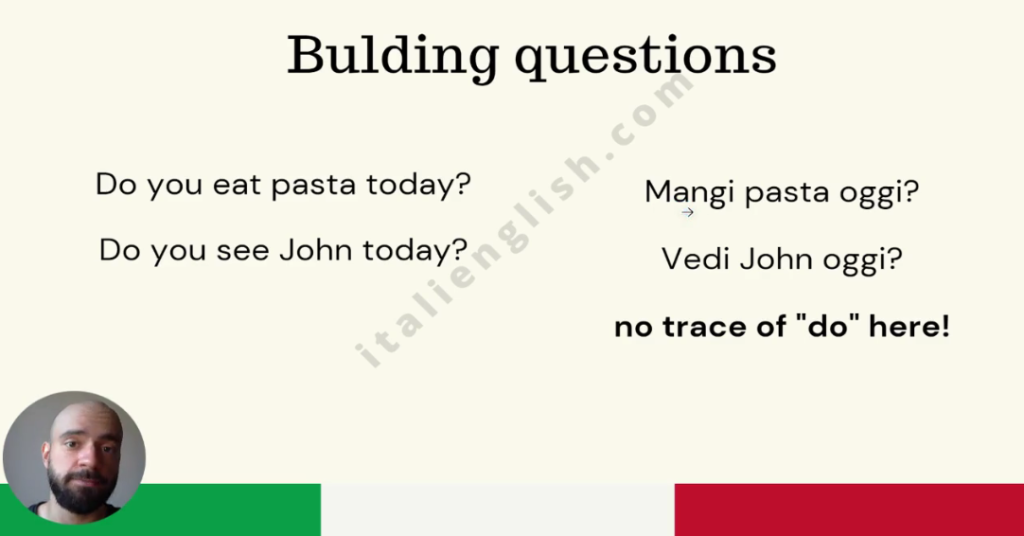Learning a new language is always an exciting journey, but it can also be challenging, especially when grappling with grammar structures unique to that language.
For native English speakers trying to learn Italian, one such tricky aspect is building questions correctly.
In this blog post, we will dive into the intricacies of Italian question formation and debunk the common mistake of trying to implement English grammar structures.
By the end, you’ll have a solid grasp of how to ask questions in Italian and why it’s easier than you might think.
Content
Understanding the Italian Question Formation
Unlike English, which relies on the auxiliary verb “do” to construct questions, Italian has a more straightforward approach. In English, you might say, “Do you eat pasta today?” or “Did you see Mike yesterday?” These sentences utilize “do” and its variations as question-building tools. However, in Italian, such structures don’t apply. Let’s take a closer look at the correct approach to forming questions in Italian.
Italian Question Formation Simplified
- Rephrase the English question in “slang English” (without “do”).
- Change the intonation to imply a question.
- Add a question mark at the end.
Example 1:
English: “Do you want to go to the cinema?”
Slang English: “You want to go to the cinema.”
Italian: “Voi andare al cinema?”
Example 2:
English: “Did you see Mike yesterday?”
Slang English: “You saw Mike yesterday.”
Italian: “Hai visto Mike ieri?”
Example 3:
English: “Will you go to Mexico in a week?”
Slang English: “You will go to Mexico in a week.”
Italian: “Andrai in Messico fra una settimana?”
By following this three-step process, you can effortlessly construct questions in Italian without the need for auxiliary verbs like “do,” “did,” or “will.”

A sneak peek from my video library. Uncover the secrets of my Italienglish© mentoring program by clicking HERE
The Importance of Intonation in Italian Questions
In Italian, as demonstrated in the previous examples, changing the intonation is crucial to transforming a statement into a question. Slang English often mirrors this intonation pattern, making it easier for native English speakers to grasp. By adopting this approach, you can confidently ask questions in Italian without overthinking the grammar structure.
Mastering Past and Future Tense Questions
Now that we’ve covered how to build present tense questions, let’s explore how the same process applies to past and future tense questions.
Past Tense:
English: “Did you see Mike yesterday?” Slang English: “You saw Mike yesterday.” Italian: “Hai visto Mike ieri?”
In the past tense, we use the auxiliary verb “avere” (to have) to form the compound past tense, also known as “passato prossimo.” The structure remains consistent; simply use the correct conjugation of “avere” and the past participle of the main verb.
Future Tense:
English: “Will you go to Mexico in a week?” Slang English: “You will go to Mexico in a week.” Italian: “Andrai in Messico fra una settimana?”
To create the future tense in Italian, we use the appropriate conjugation of the verb “andare” (to go) combined with the preposition “fra” (in) and a time expression like “una settimana” (a week).
Do you like what you’ve read so far? Wanna grab a FREE 4-videos series? Subscribe to my newsletter!

I’ll notify you of new articles and send exclusive content. Don’t worry! No spam, no unwanted emails, and no sharing your data with third parties.